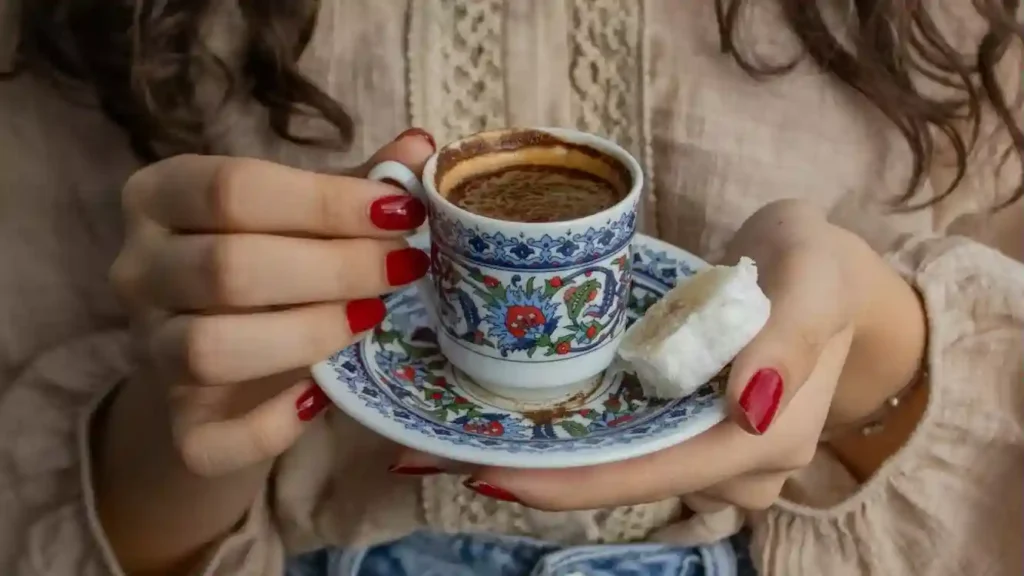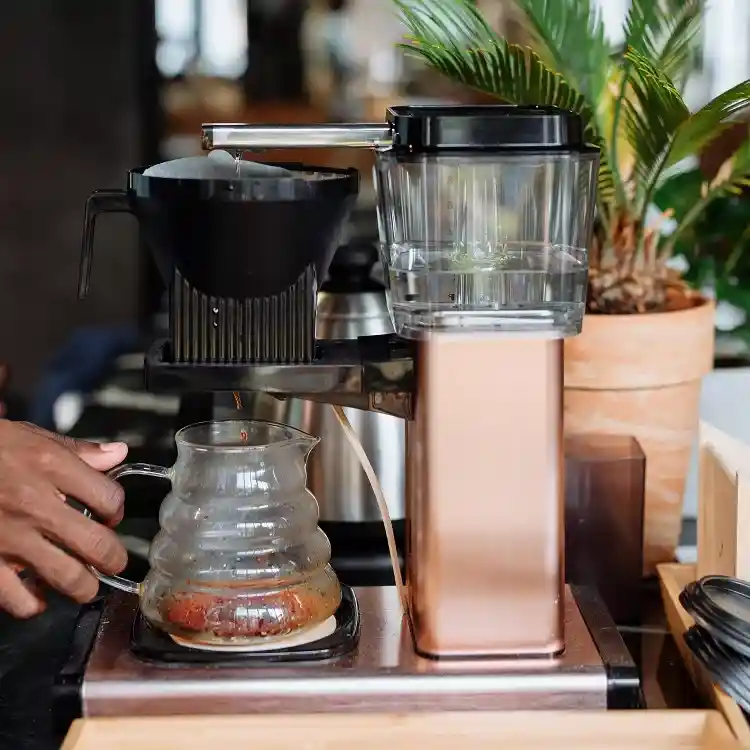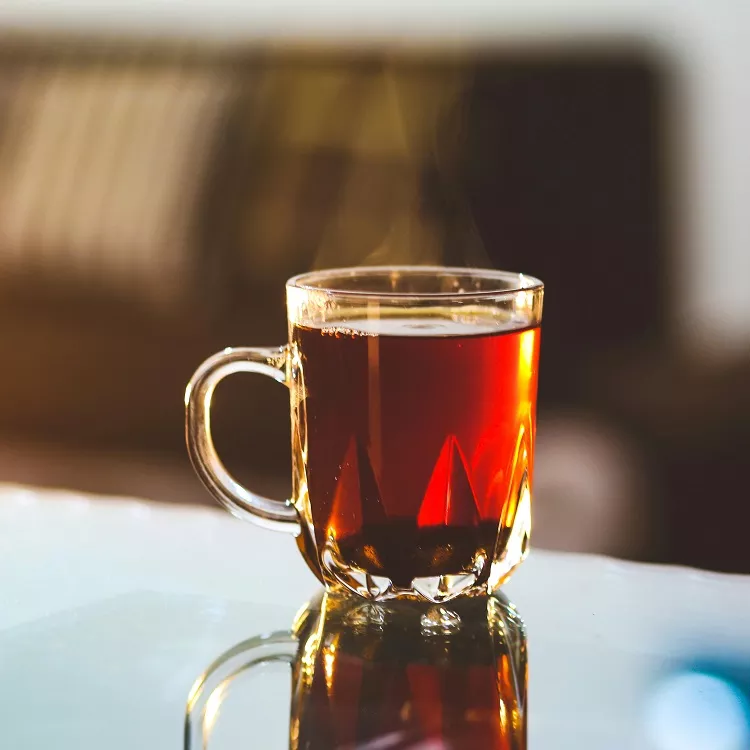Making the right coffee at home can be a pleasant morning ritual. To do this, it’s important to know a little more than how to turn on the coffee machine: from choosing beans to brewing details, from ingredients to equipment. Here are simple explanations, interesting tips, life hacks, and eight recipes for delicious coffee from professional baristas.
The basics of choosing quality coffee
We make delicious coffee with the right beans. They should be fresh, whole, and match your preferences.
The recommended shelf life is up to 30 days after roasting. By using the beans, you will retain the flavor and control over the grind. Read the flavor description on the package. It is also important to know how the fruit was processed after harvesting – this factor significantly affects the final taste.
Selecting coffee beans by processing method
The washed processing method involves cleaning the coffee berries from the pulp with water. The beans are fermented and then thoroughly dried. Washed coffee has a clean, transparent flavor with a bright acidity and often fruity or citrus notes.
Natural processing adds richness, body and sweet flavor. In this case, the coffee berries are dried whole with the pulp. The beans acquire notes of chocolate, berries, and wine.
The semi-washed processing combines elements of both of the previous ones. Some of the pulp remains on the bean during drying. The result is a sweeter, yet clean, balanced cup.
Degrees of roasting
The degree of roasting shapes the flavor: from bright fruit notes to bitter chocolate.
Light roasting preserves the maximum natural flavor of the beans. It shows acidity, fruit, berry or floral notes. The color is usually light brown without shine. Ideal for hand brewing: V60, kemex, aeropress.
The medium degree provides a balanced profile with light sourness, moderate bitterness, and pleasant sweetness. Nuts, caramel, and milk chocolate are often felt in the profile. A universal choice for various brewing methods.
Dark roasting is an intense, deep flavor. The acidity almost completely disappears, and bitterness, smoky notes, bitter chocolate, and sometimes woody hints come to the fore. The surface of the beans is usually shiny due to the release of oils. This type of coffee is suitable for lovers of strong coffee, especially well revealed in the form of espresso or when brewed in a Turk and geyser coffee maker.
Don’t be afraid to experiment. The same variety sounds different in different roasts.

Ingredients and preparation required
To make delicious coffee, you need only two basic ingredients: high-quality beans and pure water. But the magic is in the details: proportions, temperature, additional ingredients.
Water quality and its impact on taste
Water is up to 99% of the finished beverage, so its quality is critical. Water that is too hard will make the flavor flat, and water that is too soft can ruin the balance of acidity and bitterness.
Use purified or bottled water with a balanced mineral composition. A filter pitcher or a reverse osmosis system with a mineralizer is a great solution for your home.
The optimal water temperature is 92-96°C. Too hot will lead to bitterness, and too cold will not allow the flavor to develop.
A thermometer is a good idea, but at first, a visual check is sufficient: when the water stops bubbling, it’s time to make coffee.
The classic ratio of grind to water is 1:15 or 1:16 (10 g of coffee per 150-160 ml of water). For stronger coffee, the ratio is 1:14. Use a kitchen scale for a consistent flavor.
The right grinding
There is an ideal grind for each preparation method:
- Turkey – powdered
- French press is rough
- Geyser coffee maker – medium/ small
- V60, cupcake, aeropress – medium or medium-fine
- Espresso – small
Improper grinding can ruin even the best quality beans.
The best time to grind is right before brewing, so a coffee grinder is a must-have tool for anyone who wants to control the flavor. A finer grind results in a longer extraction and a richer flavor, while a coarser grind allows you to quickly extract only the surface notes. If your coffee tastes sour, try a finer grind, and if it tastes bitter, try a coarser grind.

Additional ingredients
A pinch of salt can smooth out the bitterness, emphasize the sweetness, and hide the flaws of cheap beans. This is not a joke, but a life hack that even professionals use.
Cinnamon, cardamom, nutmeg, vanilla are flavorful additions that turn a familiar drink into a new experience. It should be added to ground coffee before brewing.
Ginger, cloves, orange zest, cocoa, even black pepper – add carefully and look for new flavors that appeal to you. Instead of sugar, it is better to add a little honey or date paste.
Equipment for home barista
There is no need to buy an expensive espresso machine to make coffee. It’s enough to have a basic set and know how to use it.
Basic equipment
Turka is a good old classic, suitable for lovers of rich coffee with a rich aroma. The main rule of coffee brewing is fine grinding, low temperature and slow heating.
A geyser coffee maker is best suited for those who prefer strong coffee. The principle is simple: steam pushes water through the grinds. Use a medium or slightly finer grind and don’t over-compress.
The French press is a simple design that produces excellent results. French press requires a coarse grind of a dark degree, four minutes of infusion, and the coffee is ready. It is rich, with a rich body and a slightly oily texture.
The V60 funnel is a manual brewing machine with maximum precision. It uses a paper filter, medium grind and a gradual pour over method. The result is a clean, flavorful, balanced drink. The best method for light to medium roasts.
Additional equipment
A high-quality coffee grinder allows you to get a uniform grind, which directly affects the taste. A scale will help you to maintain the proportions of coffee to water. A thermometer is optional, but it helps to control the temperature of the water (especially with V60, kemex or aeropress) and maximize the coffee flavor. The timer helps you control the extraction time. When you start brewing manually, you will realize how important it is to keep track of time.
8 recipes from professional baristas
1. Classic coffee in a Turk
- Pour 100 ml of cold water into the turka.
- Add 1-2 teaspoons of ground coffee.
- If desired, add a pinch of sugar or spices (cardamom, cinnamon).
- Put on the lowest heat. Do not stir.
- When the foam rises to the brim, remove from heat. Do not let it boil!
- Repeat the lifting 2-3 times for a richer flavor.
- Let the coffee rest for 30 seconds. The grounds will fall.
Use soft water, light to medium roasted beans, and take your time to get a deep flavor and velvety texture.
Boiling destroys the flavor and aroma. Hot water from the kettle will make the drink bitter.
2. Turkish coffee
In Turkey, coffee is part of a social ritual: weddings, negotiations, and receptions.
The traditional drink is prepared in a copper jezve, often on the sand. Coffee, sugar, and water are mixed immediately, before being heated. The foam is not removed, and you can judge the skill by it. It is always served in small cups without milk with oriental delicacies.
3. Polish coffee
It does not require any equipment. The grind used is coarser than for a turk, but finer than for a French press.
To make coffee:
- Pour 1-2 teaspoons of coffee into a cup
- Add 200 water (~94°C).
- Sugar or honey if desired
- Cover with a saucer for 4-5 minutes.
- Do not stir. The thick stuff remains at the bottom, so drink carefully.
4. Latte and macchiato
Latte: milk is poured first, and then espresso is added. It is a soft and balanced drink without layers.
Latte macchiato: espresso is poured into the milk foam very carefully to form a visually distinguishable layer.
Espresso macchiato: a drop of foam or milk is added to the espresso. The drink is strong, with a slight milky note.
Use chilled milk with a fat content of 3.2% for frothing milk. Whisk with a cappuccino maker or French press until a thick, shiny froth forms.
5. Irish coffee
A great drink with alcoholic notes for cold weather.
- Pour 30-40 ml of whiskey and add 1 tsp of brown sugar.
- Add 120 ml of strong hot coffee and stir gently.
- Spread the whipped cream on top so that it floats on the surface.
- Drink through the cream without stirring.
6. Dalgona coffee
A popular trend that has taken over social media.
Mix instant coffee, sugar and hot water in equal proportions (2 tbsp each). Whisk until a thick foam forms.
You can serve the coffee foam with cream or cold milk or add chocolate and cinnamon on top for flavor.
7. Cold brew coffee (Cold Brew)
Coarsely ground coffee is soaked in cold water for 12-24 hours. It is best to leave it in the refrigerator for 16-18 hours. Then you need to pass the liquid through a filter.
This method is gaining popularity due to its mild flavor and low acidity.
8. Coffee like in a coffee shop
At home, you can use a home espresso machine or coffee maker. An alternative is an air press or moka pot. Be sure to use freshly roasted beans and the correct grind. Controlling the extraction time – from 20 to 30 seconds – and maintaining a stable water temperature between 90-96°C will help you get a rich and balanced drink.
Professional secrets from baristas
Brewing techniques
If the extraction takes too long, the drink will be bitter and concentrated. On the contrary, you will get a weak and sour taste. The optimal time depends on the method: for espresso it is about 25-30 seconds, for French press – 4 minutes.
The temperature of the water directly affects which notes are revealed. The recommended temperature for most methods is 90-96°C.
For methods with filters (V60, aeropress), it is important to pour the water evenly and slowly. This helps to extract coffee without bitterness or acidity. When using a French press, make sure to grind properly and press the press gently.
Common mistakes made by beginners
Don’t use old coffee, as the freshness of the raw materials significantly affects the aroma and taste of the drink. Improper grinding can also ruin the coffee. It is important to control the water temperature, as overheating or low temperature affects the quality of the extraction. To improve the result, buy coffee beans and grind them before brewing. Learn to adjust the brewing time and experiment with grinds and proportions. Record your observations and gradually improve the recipe.
Useful tips and life hacks
To maintain freshness and coffee flavor, keep it in an airtight container, protected from light and moisture, away from heat sources. Use special containers with a gas release valve to prevent oxidation. Avoid storing in the refrigerator.
Coffee gradually loses its flavor. It is better to use it within a month.

Save time in the morning
To avoid wasting time in the morning, you can grind coffee the night before. Prepare all the necessary tools and ingredients in the evening. This will save time and make the process of making homemade coffee comfortable.
You can prepare a delicious drink in advance using the cold brew method.
Experiments with flavors
Don’t be afraid to combine different coffee brewing methods, change proportions, add spices and unexpected ingredients. The right desserts will also make the drink taste special.
Conclusion
Everyone can make delicious coffee at home. It is important to choose the right coffee beans, take into account their processing and roasting degree, control the water quality, grinding, temperature, and brewing time. Knowledge of the equipment and basic techniques will help you prepare drinks better than in your favorite coffee shop. Experiment! It is through mistakes that the best coffee traditions and favorite recipes are born.






